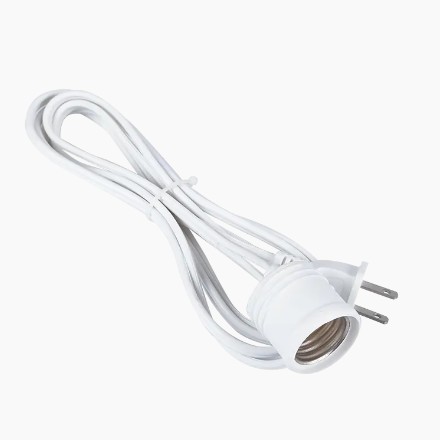Choosing a lampholder extension cord requires considering several factors to ensure it meets your needs and ensures safe and reliable operation. Here's a guide to help you make an informed decision:
Cord Length: Determine the required length of the extension cord based on your specific needs. Measure the distance between the power source and the desired location of the lamp. Choose an extension cord that provides sufficient length to reach without being too long, as excessive cord length can create a safety hazard.
Gauge and Amperage: Consider the gauge and amperage rating of the extension cord. The gauge refers to the thickness of the wire and determines the amount of electrical current the cord can safely handle. Higher gauge numbers indicate thinner wires. Select an extension cord with an appropriate gauge for your intended use, ensuring it can handle the amperage requirements of your lamp.
Plug and Socket Type: Check the plug and socket type of the extension cord to ensure compatibility with your lamp and power source. Verify the plug type matches the outlet configuration, such as standard three-prong plugs for grounded outlets. Ensure the socket type matches the lampholder or bulb socket of your lamp.
Cord Material and Durability: Evaluate the material and durability of the extension cord. Look for cords made from high-quality materials, such as heavy-duty vinyl or rubber, which offer flexibility, resistance to damage, and protection against moisture or abrasions. A durable cord ensures longevity and safe operation.
Safety Features: Consider safety features incorporated into the extension cord. Look for features such as grounded plugs, which provide an extra layer of protection against electrical shocks, and built-in strain relief to prevent the cord from being pulled out of the plug or socket. These safety features contribute to safe usage.
Cord Color and Visibility: Choose an extension cord with a color that enhances visibility and reduces the risk of tripping or accidents. Brightly colored cords, such as yellow or orange, are easier to spot, especially in low-light conditions.
Cord Management: Consider features that facilitate cord management, such as integrated cord wraps or clips for securing the cord when not in use. These features help keep the cord organized and minimize tangles or tripping hazards.
Certification and Standards: Look for extension cords that meet relevant safety standards and certifications, such as UL (Underwriters Laboratories) or ETL (Intertek). These certifications ensure that the cord has undergone testing and meets specific safety requirements.